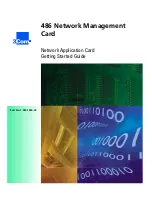
CHAPTER 11 SERIAL INTERFACE FUNCTION
User’s Manual U15109EJ3V0UD
451
(d) Reception
A receive operation is enabled when bit 6 (RXEn) of asynchronous serial interface mode register n (ASIMn)
is set to 1, and input via the RXDn pin is sampled.
The serial clock specified by BRGCn is used when sampling the RXDn pin.
When the RXDn pin goes low, the 8-bit counter begins counting and the start timing signal for data sampling
is output when half of the specified baud rate time has elapsed. If sampling the RXDn pin input with this start
timing signal yields a low-level result, a start bit is recognized, after which the 8-bit counter is initialized and
starts counting, and data sampling begins. After the start bit is recognized, the character data, parity bit, and
one-bit stop bit are detected, at which point reception of one data frame is completed.
Once reception of one data frame is completed, the receive data in the shift register is transferred to receive
buffer register n (RXBn) and a reception completion interrupt (INTSRn) occurs.
Even if an error has occurred, the receive data in which the error occurred is still transferred to RXBn.
When an error occurs, INSTRn is generated if bit 1 (ISRMn) of ASIMn is cleared (0). On the other hand,
INTSRn is not generated if the ISRMn bit is set (1).
The receive error type can be ascertained by reading the contents of ASISn in the reception completion
interrupt servicing (INTSRn).
If the RXEn bit is reset to 0 during a receive operation, the receive operation is stopped immediately. At this
time, the contents of RXBn and ASISn do not change, nor does INTSRn occur.
The timing of the asynchronous serial interface reception completion interrupt is shown below.
Figure 11-51. Timing of Asynchronous Serial Interface Reception Completion Interrupt
Caution
Be sure to read the contents of receive buffer register n (RXBn) even when a receive error
has occurred. If the contents of RXBn are not read, an overrun error will occur during the
next data receive operation and the receive error status will remain.
Remark
n = 0 to 3
RXDn (input)
D0
D1
D2
D6
D7
Parity
STOP
START
INTSRn
















































